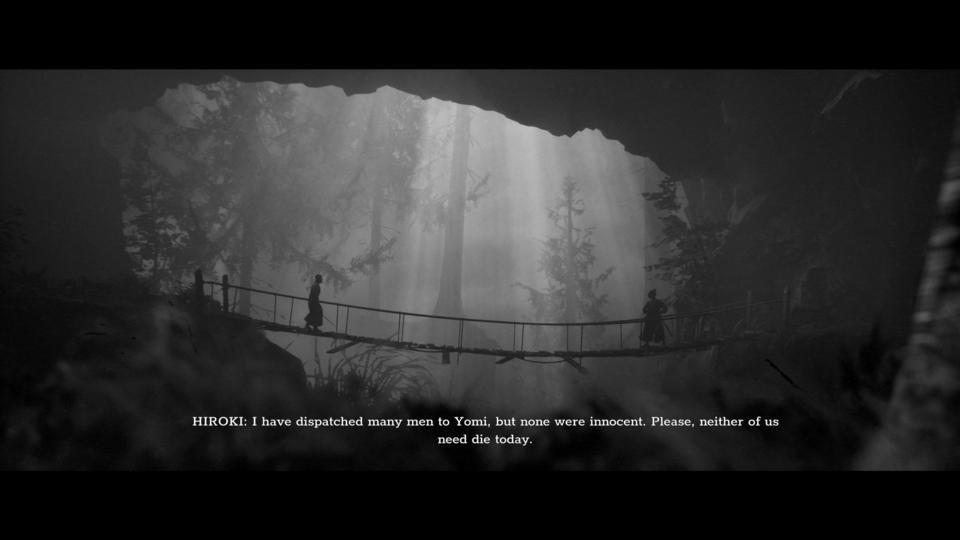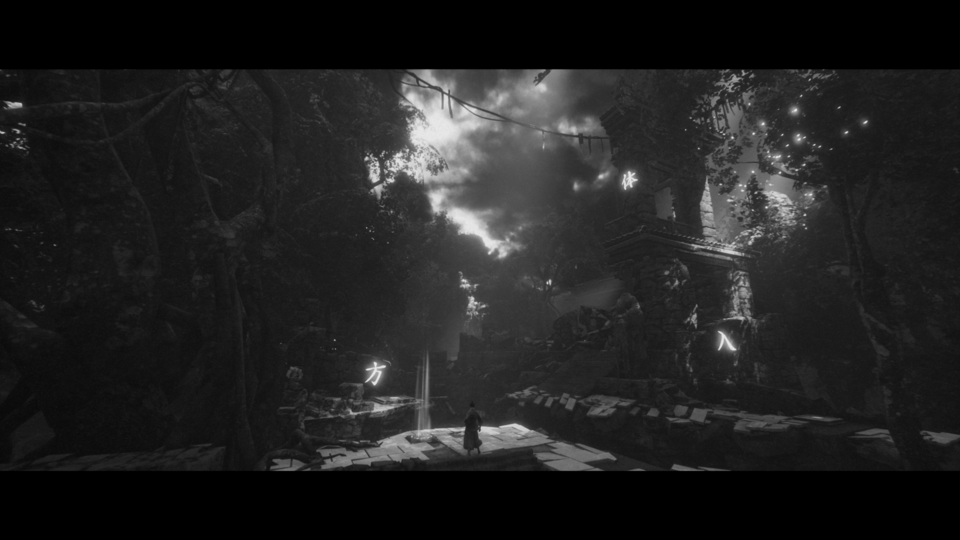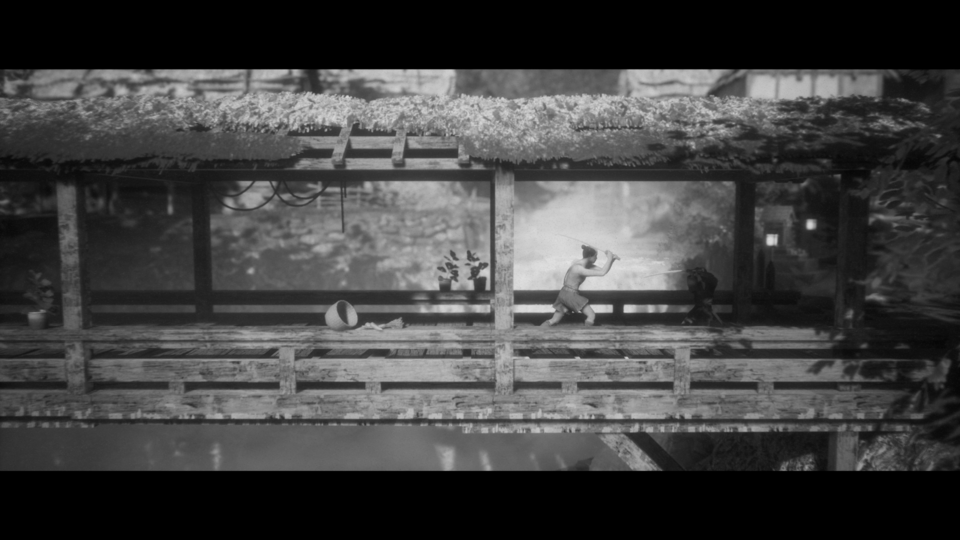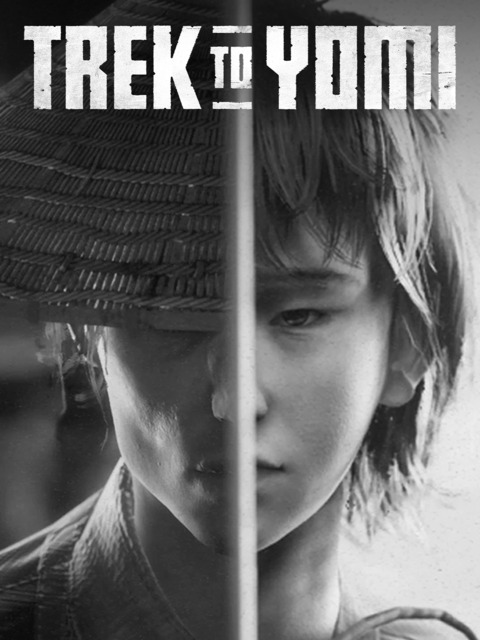The Game Pass Gambols is my chronicle of attempting to at least sample every game released on Game Pass in 2022.
Game: Trek to Yomi
Game Type: Samurai action game with 2D combat
Time Played: Xbox says 15 hours but I think that includes some suspend time and it's probably more like 6.
Completion level: Rolled credits.
Approachability: Medium. It can be tough and it won't be to everyone's taste, but I think most people can get the hang of it.
Should You Try It?: If it appeals to you, yes. I think this is a game where you can tell if you'll like it from a trailer or description, but if it looks potentially appealing you definitely should. It's well made.
Trek to Yomi is a good example of what the AA space in games has become. It’s a downloadable $20 title but it was made by a mid-sized team and has a lot of the environmental detail and polished art design you see in large team titles. It’s also somewhat experimental and takes risks, primarily in its presentation, that a AAA game simply could not afford to take. On the other hand it lacks polish in certain areas and can get a bit repetitive so you end up with a game that’s interesting and fun but with some rough edges. As a 5 or so hour experience it’s pretty easy to recommend for those who find its premise and presentation intriguing, especially if you have Game Pass.
In Trek to Yomi you play a Samurai whose sense of duty compels him to take a series of journeys in defense of his village, his love, and eventually himself. The game stands out most in its presentation, which is clearly based on old Samurai films, with black and white visuals that also have light bloom and dust specks meant to simulate old celluloid. The characters in the game also move in a somewhat stilted fashion, as if they were being captured by a camera with a slightly low frame rate, and they express themselves and emote like characters from old Japanese movies. Voices are all in Japanese with subtitles and the sound track consists of traditional Japanese musical instruments. This is a game that commits to its premise in most ways, although some of the visual design is far grander than those old movies could muster so it sort of looks like those movies would have if they’d had access to modern special effects.

The gameplay is fairly simple. There are two modes. One is a free roaming mode where you run around in a 3D environment doing things like talking to people, picking up collectables, and interacting with puzzles in the environment. The other is combat, which switches to a 2D frame and consists of sword fights, with a few ranged weapons thrown in and a decently large move set. The 3D parts are adequate but not very engaging. Camera angles are fixed so you mostly just run around and figure out how to progress, but there are a fair number of optional side areas such a houses you can go into or alternate paths. Sometimes these lead to goodies like ammo refills or health or stamina power ups. Sometimes they lead to either optional combat encounters or ways to kill enemies without combat, such as by cutting a rope that is suspending a pallet of wine above their heads. Most side areas have at least something to offer so it’s worth your time to explore. It’s always fun to see a ladder in the corner of the screen and climb up into a room to collect some health or even a new combat move. On the other hand environmental interactions and puzzles are relatively uncommon, and not overly engaging. There ae some basic symbol matching puzzles that trigger cool looking environmental changes, a few areas where you have to run away from a hazard, and a couple places where you move a cart out of the way to unblock your path or cut some ropes to drop something on some bad guys, but they don’t add much in terms of actual gameplay. It’s just enough to make the exploration parts of the game feel like something more than trudging between combat encounters, and to give the environments a feeling of interactivity.

The meat of the game, then, comes in the combat. You face off against a series of enemies ranging from bandits to more supernatural entities with your trusty katana as you primary weapon. Enemies mostly have katanas as well, but a few use something else like a spear or their claws. There are ranged enemies with bows and primitive firearms too, and they can be a real pain if you don’t have ammo for your own ranged weapons when you meet them, or if they are behind a melee enemy you need to take down before the ranged guy decimates your health. Combat itself is fast paced and snappy, with a focus on parries to open your enemy to counter attack and a fair number of offensive moves such as armor breaks and charges that you unlock as the game progresses. Enemies will approach from both sides (there’s a button to switch your orientation and you also unlock the ability to block enemies behind you without switching and a fast switch slash that is very effective) but they will also linger off the plane of combat waiting for you to dispatch your foes so you never feel overwhelmed by numbers. The game has a stamina system that gets used when blocking or attacking and after you get exhausted all you can do is parry (but not block) or do a weak and slow slash that’s nearly useless, but your stamina will regenerate fast enough that you can survive if you parry a couple times. I did have trouble getting a feel for what would exhaust me, though, and for the second half of the game I had to watch the meter more than I would like because if I focused just on the combat I would quickly find myself exhausted in vulnerable even though it seemed like I had only made a few attacks.
Overall it’s a fine combat system that’s deep enough for the length of the game but not without its faults. I never fully understood the parry window, the game has the common fault where a couple specific moves are more effective than basically anything else, and there are some very annoying enemies that you have to fight repeatedly and will make you want to throw your controller in frustration. I played on normal difficulty and the game was not exceptionally hard but there were definitely areas where I died more than 10 times trying to pass a specific check point. Bosses are tough, with a lot more reach to their weapons than you have, but all are fair with the exception of the last boss who tends to charge at you like a lawnmower and can hack your health down in a couple seconds if you block wrong. You can learn his patterns, though, and having an overly cheap final boss kind of fits with the AA vibe.

The game’s story is fine and easy to follow but not particularly engaging and it’s something you’ll have played through dozens of times in different games. There are a few technical issues and I ran into one problem that forced me to restart the game and another that made me go back to the last checkpoint because an enemy despawned or got pushed off screen and the game would not let me progress since you have to kill everyone in order to advance. In addition, the black and white visuals mixed with the darkness of some of the scenes make it hard to see some things, including some alternate routes like cave entrances that are hidden in the shadow of a dark overhang. These are minor quibbles and did not have a significant impact on my enjoyment of the game.
Ultimately Trek to Yomi is a pretty good game with a lot going for it. It pulls off its unique aesthetic very well, it has fun combat that remains interesting throughout, its story is not particularly compelling but provides enough momentum to carry you through the adventure, and the art and environments are impressive and unique. The game reminded me a lot of both Onimusha and Hellblade: Senua’s sacrifice. It’s a very linear adventure, like Hellblade, with a focus on exploring sparse but cool looking and sometimes otherworldly environments, interspersed with specific combat sections. The setting and upgrade path are closer to Onimusha, without the sword upgrades, and the game’s story has similarities to both games. I think that anyone who liked either of those titles will find something worth playing in Trek to Yomi.

I didn’t love Trek to Yomi, I only liked it, but as a Game Pass game it is a good choice. It’s the kind of game a lot of people would skip over because of its black and white graphics and 2D combat but that might be more intriguing with a lower barrier to entry. It uses its AA budget to do something different rather than just make a poor copy of a more expensive game. It’s short enough to not be a big commitment but rich and varied enough to feel satisfying. The somewhat tough combat and black and white visuals might throw some people off (I actually kind of wish the game was in color, or could at least be played in color after you beat it) but for those who give it a shot they’ll find something that feels well thought through and not particularly gimmicky. If you miss AA games or find the premise intriguing it's worth giving a shot. You may get a couple blisters along the way, but the Trek to Yomi is well worth making.
GAME PASS GAMBOLS RATING(out of 5):

Game Pass Gambols 1: The Pedestrian
Game Pass Gambols 3: Mighty Goose

Log in to comment